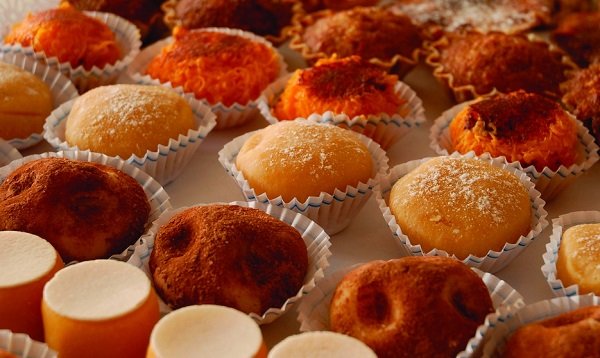The nata: Portugal on a plate. This tasty ambassador has traveled the world, and brought home honors and accolades. But the famous nata is far from Portugal’s only sweet treat. The variety of sweets and cakes from historic convents can be found throughout Portugal, and the variety in the vast southern region known as the Alentejo is mind boggling. Often based on egg yolks, almonds and sugar (and sometimes sweetened with honey), sprinkled with cinnamon (or not), each Alentejo town has its own pasties to offer.
In Évora, discover pão basto, pão de rala, toucinho do céu, encharcada (from the Convento de Santa Clara), morgados and queijadas; in Alcácer do Sal try the pinhoada; in Beja sample the trouxas de ovos, Santa Clara pastries, tosquiados and queijadas de requeijão (fresh cheese).
If you are passing through Elvas or Vila Viçosa, you cannot miss the sericá or sericaia, a truly wonderful Alentejo dessert, made with eggs, milk, sugar and cinnamon and finished with one or two sweet Elvas plums covered with syrup.
Convent sweets became famous from the 15th century, when sugar cane from Madeira and then Brazil began to be used. In addition to easy access to sugar, Portugal was one of the biggest producers of egg in Europe at the time.
Back then egg whites were used as a clarifier in the production of white wine and to press suits. Thus, there was a surplus of yolks, which convents began to use, along with sugar, to produce sweets. Portuguese convents developed all kinds of recipes. The Convent of Santa Clara boasts in a manuscript written by sister Inês Maria do Rosário and written under the orders of Abbess Maria Leocádia do Monte do Carmo in 1729. It is the first Portuguese list of convent recipes. Various sweets from the Convent of Santa Clara d'Evora. Lolca Alentejo examples include: Bolo Podre Conventual; Bolo de Mel de Santa Helena; Coalhada do Convento; Encharcada de Santa Clara; Sericá; Pão de Rala; Tiborna de Ovos; Bolo Fidalgo. These are a just few of the examples that can be tasted throughout the region.
For centuries the convents kept the secrets of the confectionery wonder, but with the extinction of the Religious Orders in the 1830s, many recipes, like the nata, were taken up by bakeries. And later by cafés and eateries.



